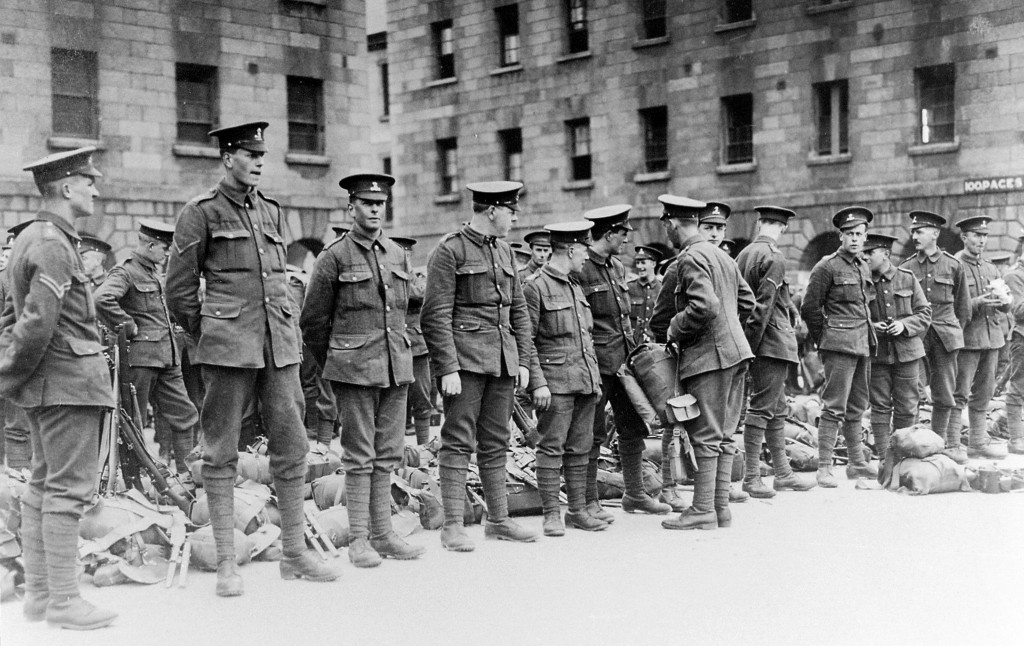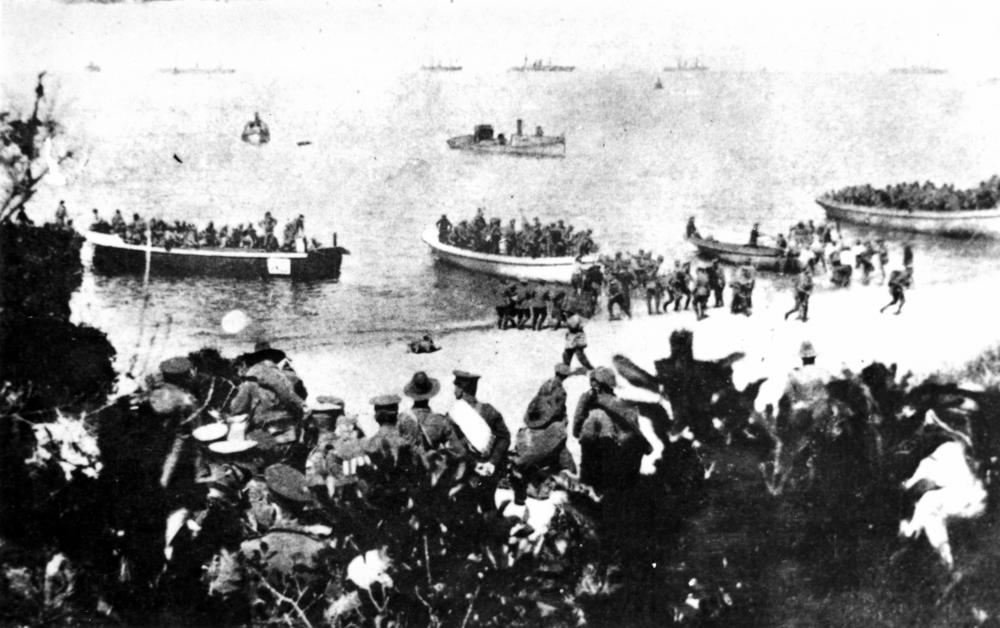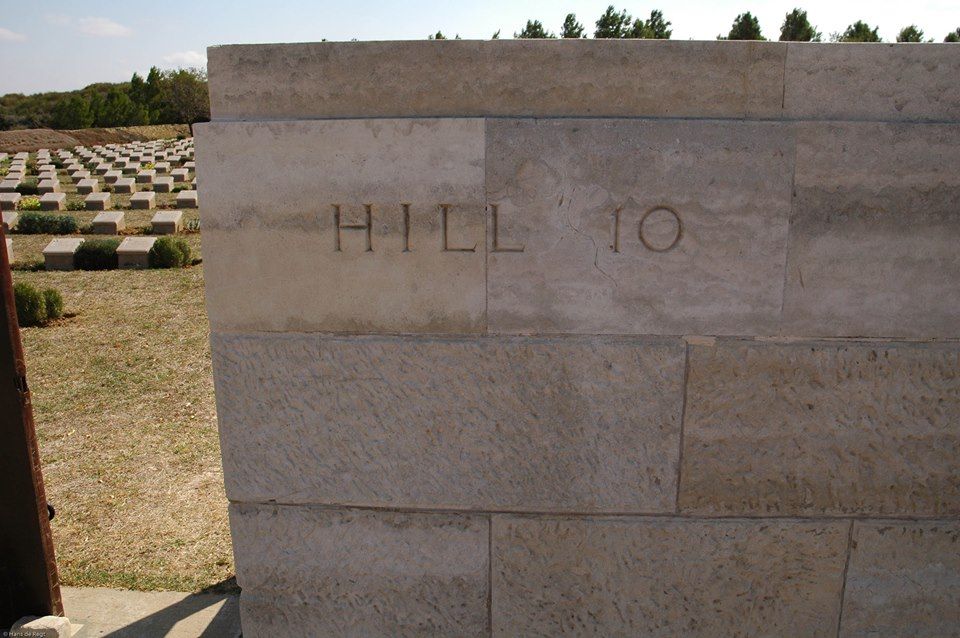
1915 – 7th Battalion Royal DublinFusiliers leave the Royal Barracks ( Now Collins Barracks)
Paddy Byrne was born in Naas in 1872. On the 7th of June 1903 he married Isabella Carrick in the Church of St Laurence O’Toole Seville Place and they had one child together, Ellen (Nelly – born 29th June 1904). They first lived first at no 2 Tenter’s Row and later moved to Hawthorn Avenue.
Isabella was the eldest girl of the large Carrick family (at least 10 children) living in Church Street. Isabella’s father was a Foreman on a Steam ship and most of his older sons worked on the docks. The Carrick’s were originally from Glasgow but seem to have settled in as a well-known family of ‘Hobblers’ about half way through the 19th century. Paddy and Isabella moved to Abercorn Road somewhere around 1906. Tragically, Isabella died that year in childbirth leaving Paddy and Ellen behind. Paddy remarried, to Mary Moran (originally from co Meath), and according to the 1911 census they lived at number 12 Church Street. Paddy was working as a labourer. It’s unclear when exactly but Mary and Ellen moved to Glasgow where they set up a grocery shop.

Inspection at the Royal Barracks (now Collins Barracks)
Paddy enlisted in the C company 7th Battalion of the Royal Dublin Fusiliers in 1914, aged 42 years (Service number 12637), with a large group of enthusiastic young men from the area. The 7th battalion was a support battalion as opposed to a front line unit and was part of Kitchener’s Army set up to supplement the regular British Army at the time. They trained in the Curragh, the Phoenix Park (digging trenches) and at the musketry school set up at Dollymount .They soon after shipped out from the North Wall to a camp in Basinstoke for further training . One trooper recalled
“The day the 7th left Dublin was a memorable one. We shall never forget the enormous crowds assembled to bid us Goodbye. In places the crowds were so dense that we could not keep our ranks. The great bursts of cheering that greeted us from time to time as we marched with fixed bayonets through the city, were inspiring. Our recollections of the loads we were perspiring under are not so pleasant. Each man carried a blanket and oilsheet, as well as his full pack”.

Members of the 7th Battalion with food supply for journey to Basingstoke
They then set sail for the Dardanelles in July 1915 as part of the 10th (Irish) Division on the liner Alunia. They reached Gibraltar on the 14th of July, Malta July 17th and Alexandra July 20th and eventually on to the Greek island of Lemnos July 24th where the landing fleet for the Suvla bay attack had been assembled. As part of a tactical ruse to make the Turks believe the attack was to take place elsewhere the Alunia sailed off to the harbour of Mitylene on Lesbos. They exercised on the Greek island and there was a great concert held on the Alunia on the evening of the Iost of August. It was to be one last night of song.

Suvla Bay landing , August 1915
On the morning of the 6th of August they left for Suvla bay, arriving there on the 7th of August. The landing seems to have gone reasonably well but due to indecisive leadership and lack of experience the landing became an impasse. It would seem that Patrick was wounded shortly after landing, or the day after, and died of his wounds on the 9th of August. He was part of a support company and was probably the victim of Turkish shelling or sniper fire as he would have been transporting food and water from the base camp at the beach to the firing line.
A sad end for Paddy, he’s not mentioned in any dispatches. Actually, not many of the ‘Dubliners’ were, perhaps as a high number of officers who would have recorded them had died. The Turks were excellent snipers and specialised in targeting officers). Paddy was amongst the 28,000 who lost their lives at Suvla.
Paddy Byrne, a North Dock resident, is buried in a small graveyard with the title Hill 10 Cemetery on the gentle slope just to the north east of Suvla Bay, looking out over the bay.

For any corrections , clarifications or further information please contact eastwallhistory@gmail.com
(The story of the Paddy Byrne and Isabella is part of a major project being compiled by song-writer Paul O’Brien, looking at the family connections between Glasgow and our community. This will be launched as part of our History Festival 2015).






